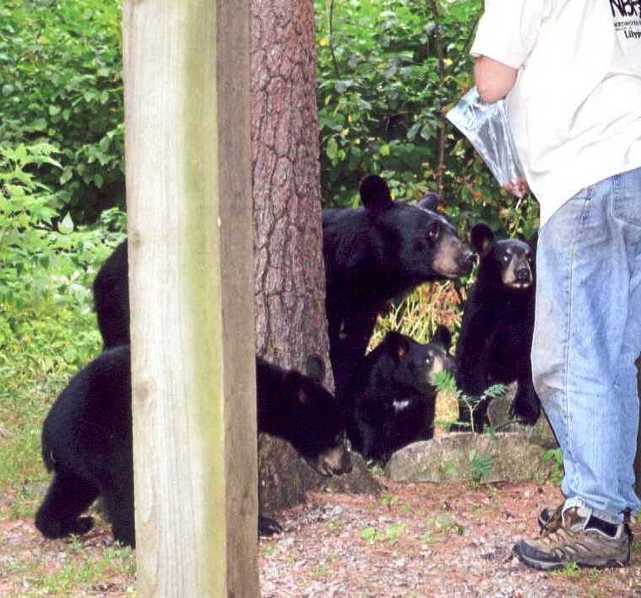My husband Tom and I are Indiana Master Naturalists who frequently
volunteer at both Gene Stratton-Porter State Historic Sites. We recently traveled to northern Minnesota to attend the Wildlife Research Institute’s Black Bear Field Study Course. The course is led by Lynn Rogers, Ph.D. who is world-renowned for his trust based research. He is called the “Bearwalker” because of the many years that he has spent walking with the bears, observing and recording data for every aspect of their lives. The bears are so used to his presence that they completely ignore him as they go about their daily routines. Dr. Rogers is also known as the “Jane Goodall” of black bears based on their trust of him. He has
been featured in full-length documentaries produced by the BBC, and by Animal
Planet. Marlin Perkins did a segment with Dr. Rogers on “Wild Kingdom” many
years ago.
The Wildlife Research Institute is located at a large cabin in a very remote
forest near the Boundary Waters area. The nearest town is Ely, Minnesota. Course
participants are immersed in black bears at the WRI site. They learn about
vocalizations, body language, social organization, ecology and how people can
better coexist with bears. They take field trips to visit and explore bear dens, are
taught how to read bear signs in the forest, and how to analyze bear scat for the
foods eaten.
Dr. Rogers has been studying black bears for over 40 years. His current
research is centered around 28 year old matriarch Shadow’s clan. Black bear
mothers share their territory with their daughters. Shadow and her female
descendants have been studied in all aspects of their lives and relationships for
over 10 years as the longest and most in-depth bear study ever done.
People from all over the world have followed along via live web cams in
dens, showing the birth and rearing of cubs. Many misconceptions about black
bears have been disproved by the 24/7 coverage of the den cams, and by Dr.
Roger’s research.
The black bears in Dr. Roger’s research are all named. One of the perks of
participating in the field study course is the opportunity to help choose names for
this year’s cubs born into Shadow’s clan. I asked if he would consider naming one
of the female cubs “Geneva” in honor of Gene Stratton Porter. He had a lot of
respect for her, and for all that she contributed to the knowledge of the natural
world in her writings and her photography.
None of the research clan’s cubs had been named this year because they had
not gotten close enough to determine their genders. The last morning of the field
study course, Braveheart showed up at the WRI with her 3 cubs. It was the first
time she had been seen this year. Her cubs got right up into the feeders at the
observation windows, and the group quickly identified them as one female, and
two males. The female had a moth shaped white blaze on her chest.
At breakfast, I asked Dr. Rogers if the female cub looked like “Geneva” to
him. He said “Yes, she did”. I then asked if the name theme of Braveheart’s litter
could be completed by naming her brothers “Stratton” and “Porter”. Dr. Rogers
loved the idea. In his subsequent daily updates, he has informed the world of the
cubs’ names, has explained the significance of the names and Gene Stratton
Porter’s great accomplishments a century ago.
I think that Gene Stratton Porter would have enjoyed coexisting with black
bears had they lived in the Limberlost, and that she would have studied them
diligently, and included them in her writings. Hopefully, she would appreciate
having these three adorable cubs named in her honor.
Indiana is now proudly represented in the Northwoods by black bear cubs in
the most extensive bear research program in the world. They are going to make
people who follow the program aware of Indiana’s beloved Gene Stratton Porter,
and how much she contributed to the world of nature studies.

 RSS Feed
RSS Feed
